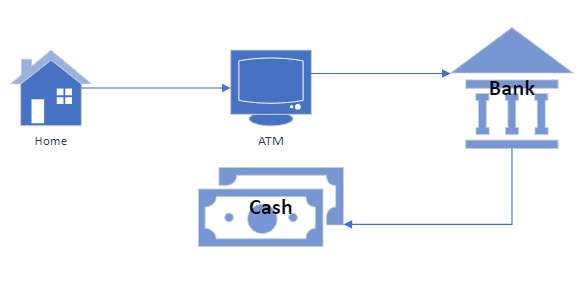Role
Industry
Solutions
Products
You may have heard someone in your IT department talk about APIs and dismissed it as yet another bit of jargon that they tend to use so often. This article explains what APIs are in a way everyone will relate to and understand.
The first thing everyone does is Google a term to try and gain some understanding. This may or may not be useful for API, depending on your understanding of the words used to explain the term. The Google result we got was:

That's enough to make your head spin. Another definition, which is better but still quite 'dense' is:

Let's try something more relatable
Just knowing that API stands for Application Programming Interface will earn you brownie points in any geek-speak conversation. So, what does it do and how does it work? Let's start by breaking down the surrounding components into items we understand. Have a look at the diagram below:

When you need cash for whatever reason, you go the ATM (Automatic Teller Machine) and you make a withdrawal request, receive the money and use it as you see fit. Now look at the next diagram:

The principle is identical. When you need information, you go to the API and make a data request, receive the data from Smartrak and then use it to create information.
Some ideas for using your data withdrawals are:
Let's take it a step further. Just as you can deposit money at the ATM, you can also submit data to an API and have that stored in Smartrak. Examples of this would be sending information to:
APIs can transfer data in both directions, depending on their purpose and how you want to use them to create automation in your own business.